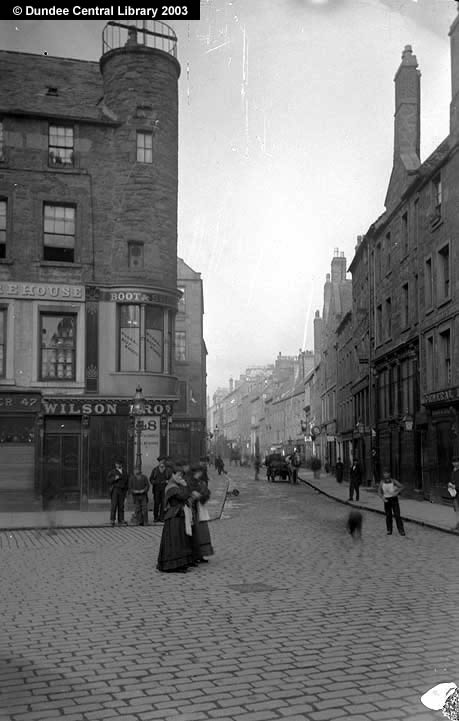
The Overgate, in the heart of Dundee, goes as far back as the early walled city of Dundee. There were a number of entrances through the walls but these were known as ports. When referring to the Overgate, the word gate does NOT refer to a gate through the wall; rather, it stems from the old word gait which means road. Overgate stretched west-east from Argyle Port (at the western wall) to High Street, the city's main street. It was the main westward route out of the city in early times. In the early 1900's picture above, you can see the Overgate stretching into the murk.
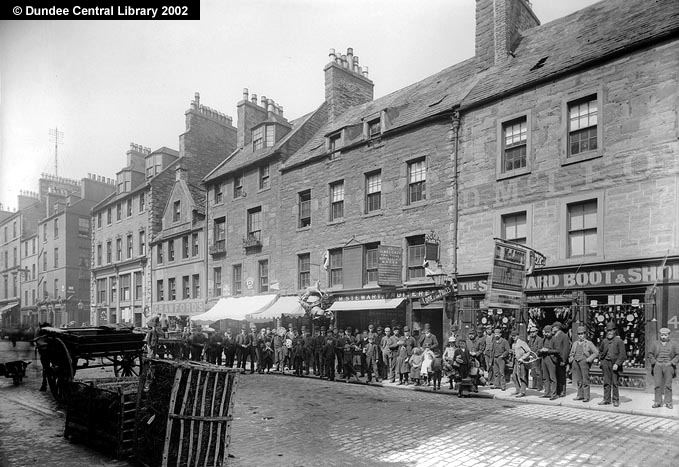
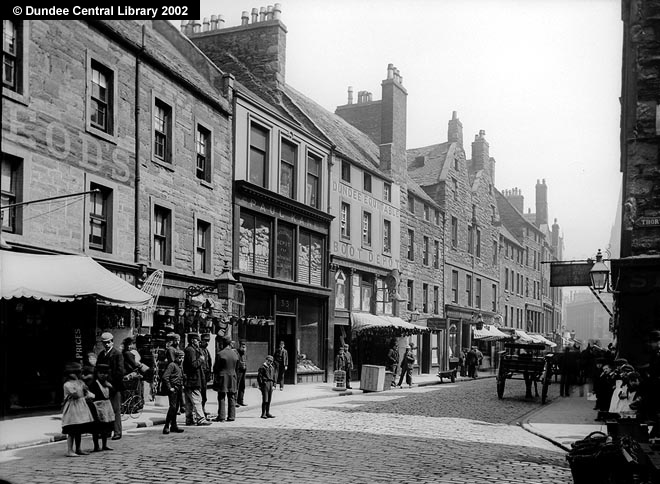
The Overgate was the main commercial street for the city when John and his family lived there. Above, you can see the shops on the ground floor with two or three floors above for living quarters. Building width appeared to vary. We can see 2-5 windowed buildings in the shots. The wider buildings might house several commercial enterprises. (Most of the pictures on this page are courtesy of the Dundee Central Library's collection of photographs taken by Alexander Wilson between 1870 and 1905. The library staff included a commentary which gave information about each photo including the street address of the visible shops.)
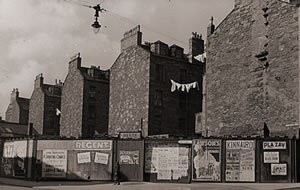
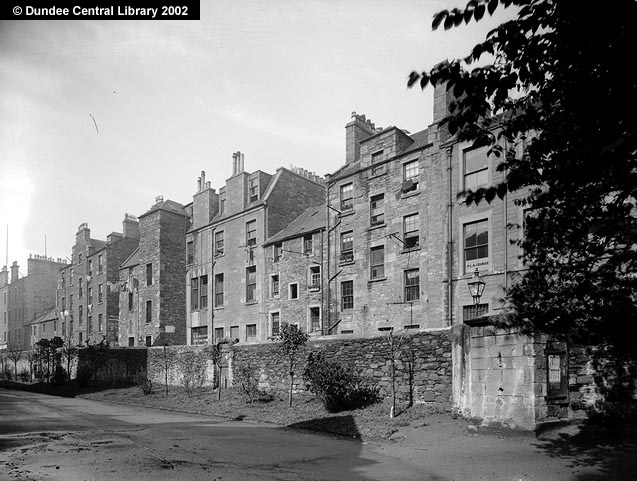
It's difficult to determine what the living conditions would be like inside the buildings. For example, how many "apartments" were crammed inside the building. Does one window represent one living quarter? We do know from the 1861 census that there were 4 families living inside of 174 Overgate with family sizes of 2, 7, 2 and 9 respectively. However, we don't know how many rooms constituted an "apartment." John and Ann would have had five children living with them in their early years; later, in 1861 for example, there were six. We can be sure that sleeping quarters were crowded, but not how crowded. Dundee was full of tenement buildings during this time period. Above left, you can see a modern era picture of the tenement buildings in Hill Town, the area closest to Dundee's factories and where the factory workers were housed. Above right, tenement buildings just one block away from Overgate in 1900.
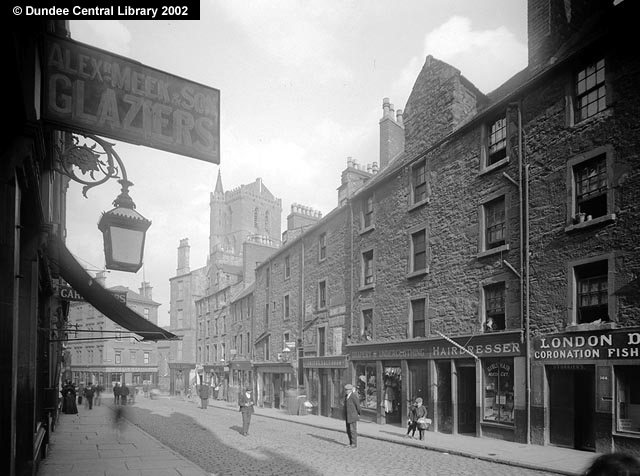
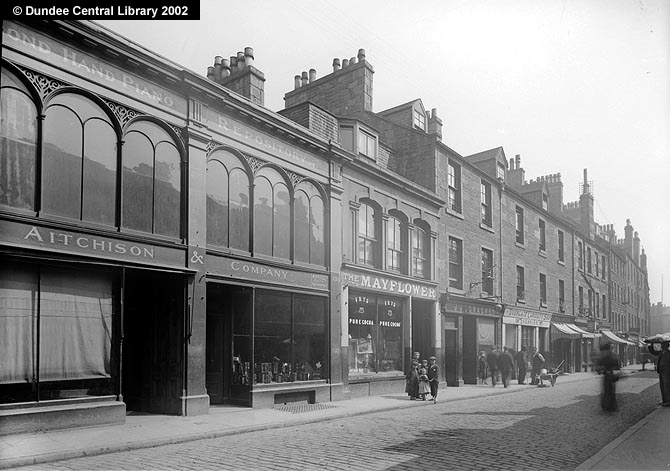
While I did find some anecdotal commentary that the Overgate tenements were typical for the period, it's possible that those statements were describing the general area, as opposed to the street itself. Above are two pictures of buildings that were quite close to 174 Overgate. Above left is a view of Overgate with a building housing Alexander Meek & Son, glaziers, at 149 Overgate. The hairdresser on the south side of the street was at #142. The fish shop was at #144. The view is eastward - towards the city center with the smaller building numbers. John and Ann's building (#174) was fifteen buildings behind the picture taker and on the right side.
The picture above right is also facing east but is taken further away from the city center with a view of the north side of the street. The Mayflower was a coffee tavern (in 1900s) and was found at 189 Overgate. Further down is a chemist at #185. The buildings at the visible end of the street would have been roughly opposite 174 Overstreet. (Note that the Aitchison building in the foreground was not from the 1850s.) Both of these shots show pictures of basically three story buildings with 2-4 windows per living quarter floor. Certainly, living in these buildings would not be the same crowded experiences as the Hill Town. Bear in mind too that John would probably have been earning more than mill workers who were primarily women and children working at wages below those of tradesmen. Also, the family would have had the benefit of Elizabeth and Mary Ann's wages once they began to work (which was probably quite young if the followed the pattern of other families.)
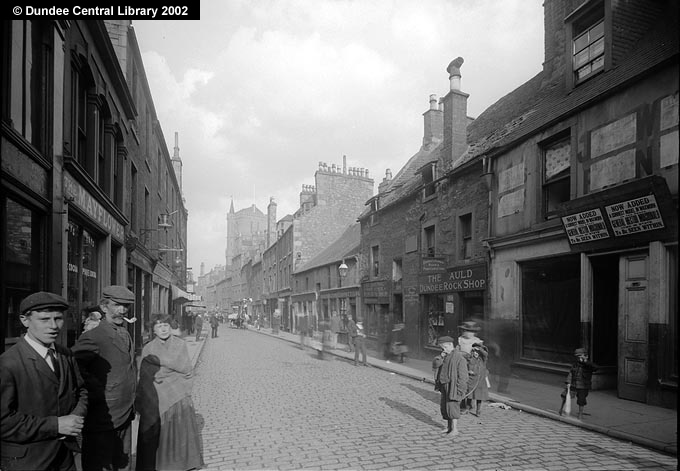
The best picture I found of the section of Overgate where John and Ann lived is above. The picture is taken from the same location as the previous photograph, but with a view of the south side of the street. Just visible on the left side is the Mayflower at #189. Across the street is the Auld Rock Shop at #188. Count seven buildings down from there and you'll have #174
By 1920, the Overgate area had become an overcrowded, unsanitary area of the city and plans were proposed to redevelop the area but the economic depression of the 30s and the war put an end to those ideas. In the 1960s, the warren of 18th and 19th century shops and commercial enterprises was demolished and a shopping centre built in its place. That shopping centre was replaced in 2000.
Sources
Various web sites, including
Dundee City Council: Photopolis (http://www.dundeecity.gov.uk/photodb/main.htm)
Overgate: Dundee Planning and Transportation Dept. (http://www.trp.dundee.ac.uk/library/schools/overgate.pdf)